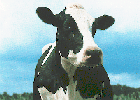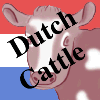
The relation between fore udder attachment and culling rate



The fore udder attachment should be strong and the fore udder should blend smoothly into the body wall. Fore udders which are too loose (scores 1 and 2) are penalized in scoring total udder, due to causing shorter herdlife. On the other hand, udders with a fore udder atachment score of 9 are also less desirable, since significant lower milk production from these udders are reported. These udders might be more fleshy and could have less dairy texture.
Figure 1 shows the relation between fore udder attachment and herdlife. These results originate from a research study, in which about 500,000 data from first-lactating heifers were analyzed in order to quantify the influence of conformation traits on herdlife. Figure 1 shows there is an optimum for fore udder attachment in regard to herdlife. A fore udder attachment of 5 to 8 is considered to be optimal. Moreover, the fore udder should have adequate length and must be wide. The quarters should be of equal size. Extra information about the strength of the fore udder attachment can be obtained by the classifier when the cow is walking. Less or no movement in the attachment is a sign of strength.